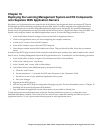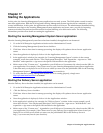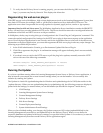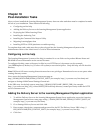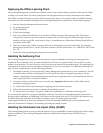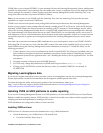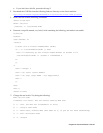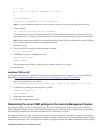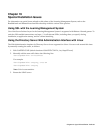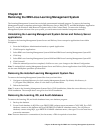CLIMP allows you to import SCORM 1.2 course package files into the Learning Management System, making them
available for deployment. Course package files can contain new courses, or updates to previously-deployed courses.
Course packages are created by content vendors using the Learning Management System Authoring Tool, or by
using some other tool that can produce SCORM 1.2 content.
Note: It is not necessary to use CLIMP with the Authoring Tool, since the Authoring Tool provides the same
capabilities to import courses that CLIMP does.
CLIMP can be used to both upload course package files and then import them into the Learning Management
System or just to import course packages that are already available on an FTP or file server. After the file has been
uploaded, CLIMP initiates the import operation by sending an HTTP request to Content Manager servlet, which
runs on the Learning Management System Server. A single CLIMP command can process multiple files, although
the Content Manager will import those files one at a time. With CLIMP, you can optionally specify one or more e-
mail addresses to receive e-mail notifications about the status of the import operation. After a new course has been
successfully imported, it appears as an unregistered master in the Learning Management System course master
catalog.
You need a Java run-time environment (JRE) installed and on your search path in order to run CLIMP. CLIMP is
built using JDK 1.3 and may not work with other JDK versions. The name of the installed zip file (if you chose to
install Utilities during the Learning Management System installation) is climp.zip. To install the utility, use the
following procedure:
1. Create a directory on your local workstation in which to install CLIMP. The climp.zip is installed when you
select Utilities as an option in the Server installation procedures. See the chapters “Installing the Learning
Management System Server application files” and “Installing the Delivery Server application files” for more
information.
2. Unzip the contents of climp.zip into the CLIMP directory.
3. For UNIX only, change the permissions of CLIMP shell script as follows: chmod +x climp
4. Change your CLASSPATH to include the directory where you installed CLIMP (if it not already in
CLASSPATH).
Migrating LearningSpace data
If you need to migrate information from a previous version of LearningSpace into the new Learning Management
System deployment, consult the documentation for the migration utilities posted to the Web.
To obtain the migration utility and quarterly updates of the documentation, please go to
http://www-1.ibm.com/support/search/index.html and search on Learning Management System Migration
Utility and Quarterly Documentation Updates.
Installing XVFB on UNIX platforms to enable reporting
If you run the Learning Management System on a UNIX platform, you must install XVFB (Xserver Virtual Frame
Buffer) to enable the reporting feature. XVFB provides a virtual Xserver that runs without a head or graphics card,
releasing you from the requirement of running a real Xserver.
XVFB installation and configuration differs for Linux and AIX.
Installing XVFB on Linux
XVFB for Linux is a freeware and can be obtained from x.org's X11R6 distribution.
1. Check the directory /usr/X11R6/bin for a file named Xvfb.
• If you have this file, skip to step 4.
94 IBM Lotus LMS Release 1 Installation Guide




